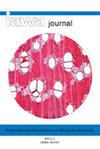Breathing life into trees: the physiological and biomechanical functions of lenticels
IF 3.5
3区 农林科学
Q2 FORESTRY
引用次数: 4
Abstract
Lenticels can be defined as pores that are the entrance of a continuous aeration system from the atmosphere via the living bark to the secondary xylem in the otherwise protective layers of the periderm. Most work on lenticels has had an anatomical focus but the structure-function relationships of lenticels still remain poorly understood. Gas exchange has been considered the main function of lenticels, analogous to the stomata in leaves. In this perspective review, we introduce novel ideas pertaining to lenticel functions beyond gas exchange. We review studies on lenticel structure, as this knowledge can give information about structure-function relationships. The number of species investigated to-date is low and we provide suggestions for staining techniques for easy categorization of lenticel types. In the follow-up sections we review and bring together new hypotheses on lenticel functioning in the daily “normal operation range”, including regulative mechanisms for gas exchange and crack prevention, the “stress operation range” comprising flooding, drought and recovery from drought and the “emergency operation range”, which includes infestation by insects and pathogens, wounding and bending. We conclude that the significance of dermal tissues and particularly of lenticels for tree survival has so far been overlooked. This review aims to establish a new research discipline called “Phytodermatology”, which will help to fill knowledge gaps regarding tree survival by linking quantitative and qualitative lenticel anatomy to tree hydraulics and biomechanics. A first step into this direction will be to screen more species from a great diversity of biomes for their lenticel structure.给树木注入生命:皮孔的生理和生物力学功能
扁豆可以定义为气孔,它是从大气通过活树皮到周皮保护层中次生木质部的连续通气系统的入口。大多数关于皮孔的研究都集中在解剖学上,但对皮孔的结构与功能关系仍知之甚少。气体交换被认为是皮孔的主要功能,类似于叶片中的气孔。在这篇综述中,我们介绍了关于气体交换之外的慢丝功能的新观点。我们回顾了关于扁豆结构的研究,因为这些知识可以提供有关结构-功能关系的信息。迄今为止调查的物种数量很少,我们为染色技术提供了建议,以便于对扁豆类型进行分类。在后续章节中,我们回顾并汇集了关于扁豆在日常“正常操作范围”中的功能的新假设,包括气体交换和防裂的调节机制,包括洪水、干旱和从干旱中恢复的“压力操作范围”,以及包括昆虫和病原体侵扰的“紧急操作范围”,受伤和弯曲。我们的结论是,到目前为止,真皮组织,特别是皮孔对树木生存的重要性一直被忽视。这篇综述旨在建立一个名为“植物皮肤学”的新研究学科,通过将定量和定性的扁豆解剖与树木水力学和生物力学联系起来,这将有助于填补有关树木生存的知识空白。朝着这个方向迈出的第一步是从丰富多样的生物群落中筛选更多的物种,以了解它们的慢丝结构。
本文章由计算机程序翻译,如有差异,请以英文原文为准。
求助全文
约1分钟内获得全文
求助全文
来源期刊

IAWA Journal
农林科学-林学
CiteScore
3.40
自引率
15.80%
发文量
26
审稿时长
>36 weeks
期刊介绍:
The IAWA Journal is the only international periodical fully devoted to structure, function, identification and utilisation of wood and bark in trees, shrubs, lianas, palms, bamboo and herbs. Many papers are of a multidisciplinary nature, linking
 求助内容:
求助内容: 应助结果提醒方式:
应助结果提醒方式:


